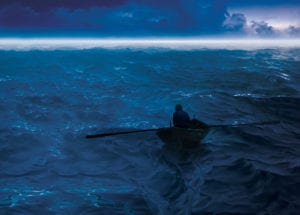By Daniel de la Calle
Let me ask you this question: in the fight to save ecosystems and biodiversity around the globe, do you think we should begin targeting those areas and species with more chances of survival? Or should most funding resources still go to those areas that seem more fragile, more threatened by our impact on weather, water, air and soil?
Where should the line dividing realism and idealism, utopianism and pragmatism be placed?
This question has been spinning in my head since I read an article in Newscientist.com about coral preservation.
Scientists know certain species and areas are better equipped for future scenarios of changes in temperatures, water acidity, precipitation; there is no doubt about it. Even I noticed as a kid in my local beaches how some fish were o.k. in polluted waters while others disappeared, we know of examples everywhere. “Coral ecologists are now arguing that such species should drop down the list of conservation priorities – even if they typify the species-rich hotspots that are the poster children of conservation efforts”, the article said.
It is a fascinating question. We have had campaigns about saving pandas, dolphins, whales; we clearly favor what we consider beautiful looking animals, preferably large, “smart” and mammal, those we empathize with.
Pandas, the symbol of the WWF, are striking, cuddly, like a chubby kid in a black and white fur costume, they’re even vegetarian (= seen as harmless). We all like pandas, they symbolize our fight to preserve nature, our love for it. But this is sort of misleading; the reality is that yes, we are saving the pandas (barely), but we are losing the fight for biodiversity, losing big time. I love pandas and my daughter adores them, but for the sake of argument (and hoping she does not read this), let’s imagine we left the panda to its human induced fate, to sooner or later join the dodo. Would the panda be more helpful in the defense of the environment as an extinct martyr, as the face of our global failure? Could it be that the fragile “success” with pandas is sending the wrong signal to society, that people think that as long as they see footage of whales in the ocean, of giant, red pandas chewing on bamboo in China that we really are preserving nature, that things are dandy?
Going back to coral reefs and funding for conservation, Tim McClanahan, senior conservation zoologist at the Wildlife Conservation Society believes that it is time to reassess priorities and not focus so much on biodiversity hotspots with abundant and diverse species that tend to be less adapted to handling stress and more on areas that have already shown the ability to cope better with environmental stress. Some scientists agree “that conservation resources need to be carefully targeted to protect as many species as possible”. But there are others, like Charles Birkeland from the University of Hawaii, who interpret this as simply giving up.
Coral polyp
McClanahan and his colleagues studied the recovery of corals in the Western Indian Ocean after the 1998 bleaching. Some areas rebounded better than others. They looked at long-term satellite data to determine which of the stronger spots are in areas least likely to experience long-lasting environmental stress. It turned out that such coral areas had not really been seen as a priority in the past because they are near heavily populated regions. McClanahan considers it “a more realistic approach”. Up until now most money has gone to protect taxonomically diverse coral reefs that lie more isolated, not taking into consideration their resistance to sea water warming, Ocean Acidification and all remaining dangers.
What do you think? I go back and forth between both approaches, but have to admit that what primarily makes me want to continue focusing on the most threatened environments is a naïve desire to keep believing in the impossible perfect happy ending.

